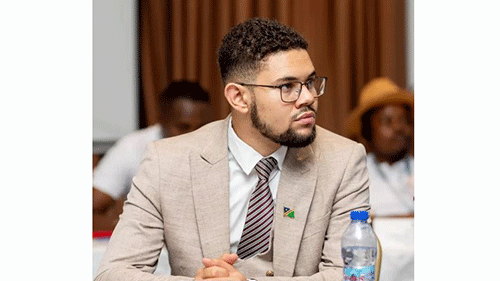Roberto Dirkse
Background
Since 2020, Malaysia’s body polity has been characterized by instability and internal strife, following the “Sheraton Move” that saw former Prime Minister Mahathir Mohamad resign. Two prime ministers have been appointed without a general election and have since resigned, and the Lawan demonstrations in August 2021 marked the apex of mounting discontent with how previous Prime Minister Muhyiddin Yassin handled the Covid-19 pandemic in the country. The protests were successful, as Yassin resigned seventeen months later, becoming Malaysia’s shortest-serving prime minister since independence from Britain in 1957.
Four years after a watershed election in 2018, it is perplexing to think that many Malaysians and indeed the world watched with bated breath as it appeared that the southeastern Asian region would finally emerge from six decades of one-party dominance, and of course the patronage that has since ensued, as well as the blatant form of racial discrimination against non-Malays, due to the Bumiputra Policy. This certainly gave the Malaysian electorate more reason to vote and depose the world’s longest-serving coalition, Barisan Nasional. The promised prosperity now seems even further away than before.
Snap election
The 15th general election (GE15) for Malaysia will take place on Saturday, November 19 according to the country’s electoral commission on October 20, just 10 days after the dissolution of Parliament by Prime Minister Ismail Sabri Yaakob.
More than 21 million Malaysians are expected to vote in next month’s general election as a result of Undi18 (“Vote at 18”), a bill passed in June 2019 that lowers the voting age from 21 to 5 million of them being first-time voters. At first glance, it would appear that the youth, particularly those under the age of 21, are the driving force behind the 2022 election results; however, while the bill greatly expands young Malaysians’ opportunities to participate in the nation’s political system, it remains unclear whether this larger electorate will have an impact on the results of the upcoming election, as the youth bulge is marked by apathy, uneven constituencies, and a striking conservatism among youth. Perhaps this is not the precursor to long-term change that it is being portrayed to be.
Characteristics of Malaysian youth
These new Malaysian voters are not necessarily more liberal and less influenced by identity politics. Due to different birthrates, the young are more likely to identify with Malay and indigenous groups than the rest of the population. While they did not vote for the Barisan Nasional in the previous election, the youth were instrumental in the rise of the Malay-oriented party – PAS. Furthermore, Malaysian youth are disinterested in politics, as is the case in many other countries, which is especially true given the Bloomberg poll, which revealed that only 40% of Malaysians would vote if an election were called tomorrow.
Moreover, votes at the state level provide an imperfect but perhaps prescient glimpse of the future. The UMNO-led coalition won 40 of 56 seats in the southern state of Johor in the March election, while the voter turnout was a pitiful 55%. Under pressure from the economy, the appeal of patronage politics seems to still exist – even for young people. Finally, there’s the issue of Malaysia’s uneven constituencies, and the unequal representation that results from large disparities in the size of electoral districts used to select parliamentarians – a bias UMNO has long exploited with its rural support. Many young people voting for the first time will be in these underrepresented urban areas, but resources and attention will be directed toward more easily won rural seats.
Lessons for Namibia
While these are two very different countries, shaped by their contrasting body polities, the warning signs for Malaysia can serve as potential lessons for Namibia. Many political formations will naturally compete for the youth vote, which is expected to sway the paramount national elections in 2024. However, whether a spirit of active participation can be fostered among the youth remains to be seen, raising the question of whether the liberal, identity-driven youth will outnumber the conservative and apathetic youth at the polls. In addition, how can mobilization machinery be designed to reduce potential absenteeism? Finally, a case study of political coalitions must be dissected in order to avoid potential domestic shortfalls.
In closing, there is no denying that the youth certainly has the numbers to decide the election – both in Malaysia and in Namibia, but the youth can only be kingmakers if they want to.
*Roberto Dirkse is a political scientist, the views expressed in this article are done so in his personal capacity.


